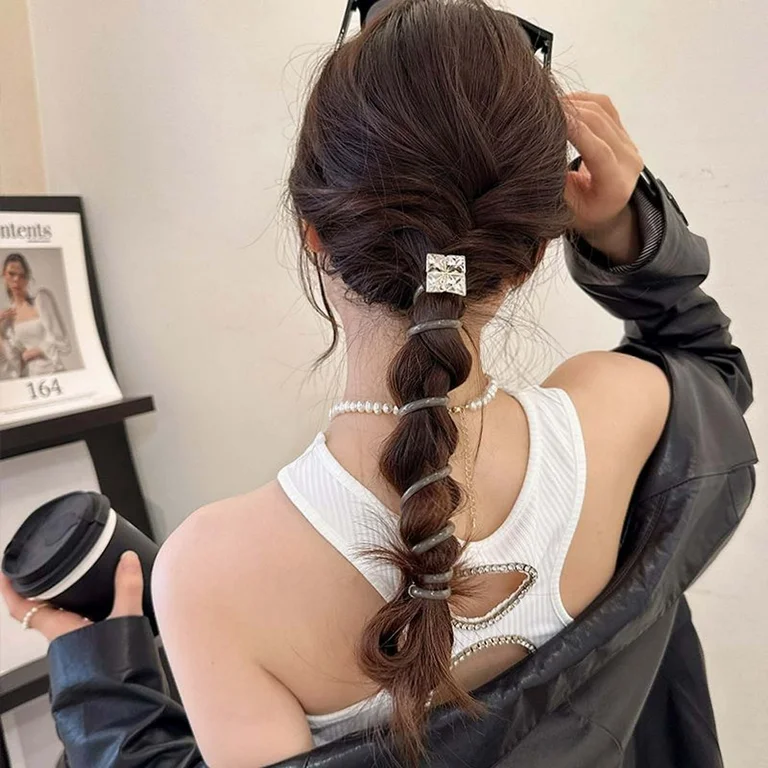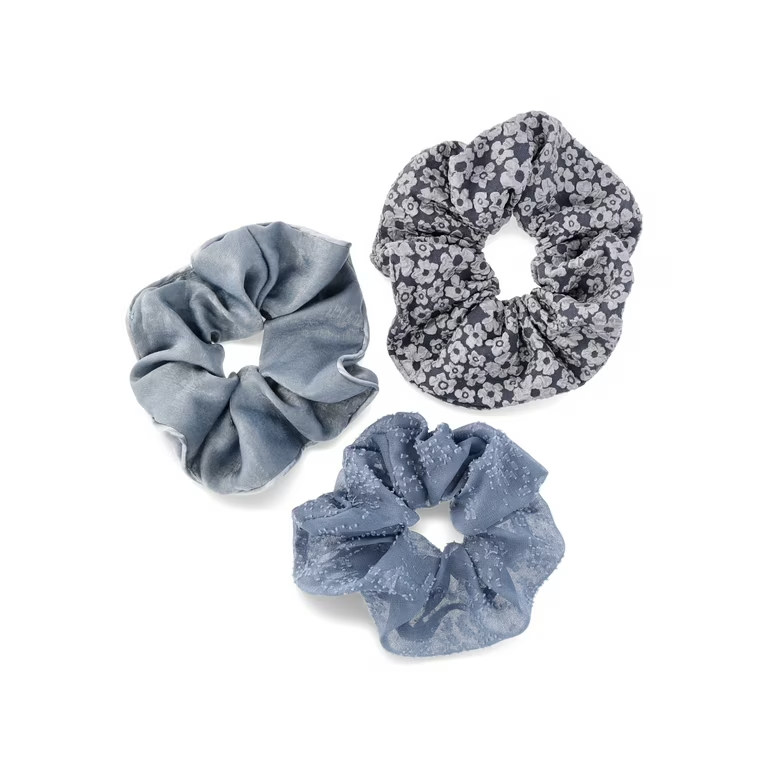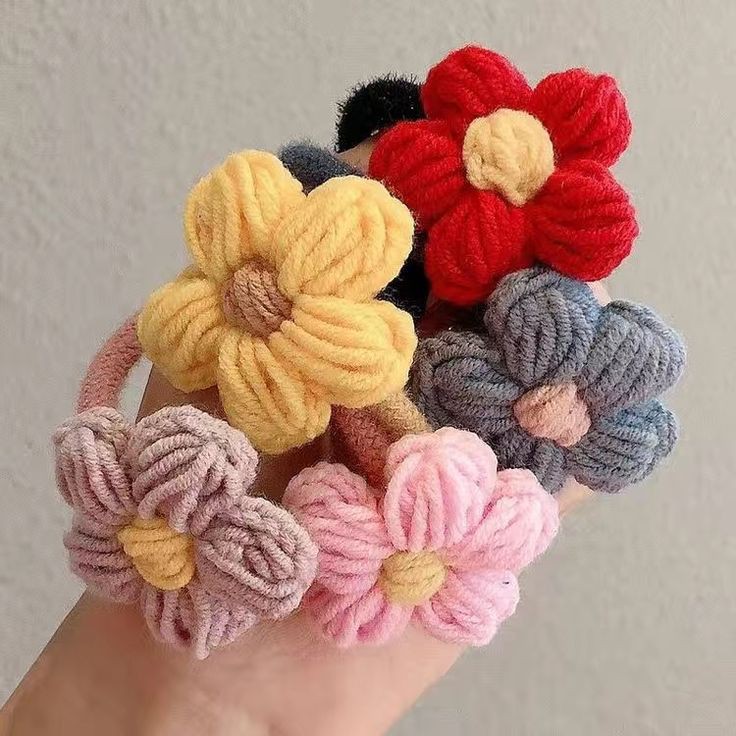
Coil Hair Tie: Revolution in Hair Accessories
History and Development of Coil Hair Ties
Innovative hair accessory designers introduced coil hair tie to the market in the early 2000s. The unique spiral design emerged from telephone cord inspiration, creating a revolutionary hair accessory. Manufacturers developed special plastics that could maintain a coiled shape without permanent deformation. Early versions came in clear and black colors, appealing to professional women seeking discrete hair solutions. The popularity of coil hair ties grew rapidly through word-of-mouth recommendations among beauty enthusiasts. Beauty salons started incorporating coil hair ties into their retail selections for clients.
Professional hairstylists recognized the benefits of reduced hair damage compared to traditional elastic bands. The evolution of manufacturing processes allowed for more color options and sizes. Market demand drove the development of different coil thicknesses for various hair types. Fashion influencers helped popularize coil hair ties through social media platforms and beauty blogs. Department stores began featuring coil hair ties prominently in their hair accessory sections. Beauty supply stores created dedicated displays for different coil hair tie brands. The success of coil hair ties inspired numerous manufacturers to enter the market. Technological advances improved the durability and flexibility of coil materials over time. Consumer feedback led to refinements in coil diameter and tension specifications.

Benefits and Advantages of Coil Design
Coil hair tie prevent the formation of unsightly creases in styled hair. The spiral shape distributes pressure evenly across hair strands, reducing breakage risks. Athletes appreciate how coil ties stay securely in place during intense physical activities. The waterproof material makes coil ties perfect for swimming and water sports. Gentle tension prevents headaches commonly associated with traditional hair elastics.
The flexible design accommodates different hair thicknesses without losing its shape. Coil ties easily stretch to accommodate thick or textured hair types. The smooth surface prevents tangling and pulling during removal from hair. Users can wear coil ties as fashionable bracelets when not securing hair. The durable material resists stretching out even with frequent use and washing. Professional hairstylists recommend coil ties for maintaining blowouts and special occasion styles. The innovative design prevents hair breakage around the tie point. Coil ties work effectively for all hair lengths, from shoulder-length to extra-long styles. The gentle grip maintains hairstyles without causing damage or breakage.
Versatile Applications and Styling Options
Coil hair ties create perfect ponytails without leaving visible marks or creases. Fashion-forward users stack multiple coil ties for unique and colorful hair accessories. Professional stylists use coil ties to secure intricate updos for special events. The flexible design allows for creative styling options beyond basic ponytails. Coil ties effectively secure partial updos and half-up hairstyles with ease. Athletes combine multiple coil ties for extra-secure athletic styles during competitions.
Dancers appreciate how coil ties maintain styles through complex choreography and movements. The stretchy material accommodates both sleek straight styles and voluminous curly hair. Beauty enthusiasts create unique looks by mixing different colored coil ties together. Coil ties work perfectly for securing braids and preventing flyaway strands. The gentle hold maintains curl patterns in natural and textured hair. Fashion bloggers showcase innovative ways to incorporate coil ties into trending hairstyles. Professional photoshoots utilize clear coil ties for invisible hair support. The versatile design suits both casual everyday styles and formal occasions.

Material Science and Construction
Manufacturers use specialized thermoplastic materials to create durable coil structures. The production process involves precise temperature control to maintain consistent coil shapes. Quality control measures ensure uniform thickness and tension in every coil tie. Advanced polymers provide flexibility while preventing permanent stretching or deformation. The smooth surface finish prevents hair damage and reduces friction during use. Material scientists continuously improve the durability of coil tie components.
Specialized coating processes enhance the water-resistant properties of coil ties. The manufacturing process eliminates sharp edges that could damage hair strands. Color-fast dyes prevent bleeding or fading even with frequent water exposure. Production facilities maintain strict quality standards for consistent coil tie performance. The material composition allows for thorough cleaning without degrading the coil structure. Specialized equipment ensures precise coiling during the manufacturing process. Testing procedures verify the stretch resistance and recovery of finished coil ties. The materials used comply with international safety standards for hair accessories.
Professional Use in Salons and Athletics
Hair salons stock various sizes of coil hair tie to accommodate different client needs. Professional stylists recommend specific coil tie sizes based on hair texture and density. Athletic trainers choose coil ties for secure hair management during intense training sessions. Competitive swimmers rely on water-resistant coil ties during practice and competitions. Dance studios require coil ties for maintaining precise performance hairstyles. Gymnastics teams coordinate coil tie colors with competition leotards and uniforms.
Beauty schools teach proper coil tie application techniques to styling students. Professional photoshoots use clear coil ties for invisible hair control. Fitness instructors appreciate the secure hold during high-impact workout sessions. Salon professionals demonstrate proper coil tie removal techniques to prevent tangling. Sports teams bulk order custom-colored coil ties for team unity. Theater productions use coil ties for quick costume changes and character styles. Professional cheerleaders coordinate coil tie colors with team uniforms. Wedding stylists incorporate decorative coil ties into bridal party hairstyles.

Care and Maintenance Guidelines
Regular cleaning maintains the hygienic condition of coil hair ties. Gentle soap and water effectively remove product buildup and oils. Proper drying prevents water spots and maintains the coil tie’s appearance. Storing coil ties properly prevents tangles and maintains their original shape. Avoiding excessive stretching helps maintain the coil tie’s tension and effectiveness. Regular inspection identifies worn coil ties that need replacement.
Rotating between multiple coil ties extends their useful lifespan considerably. Gentle handling during removal prevents unnecessary stretching and deformation. Proper sizing reduces wear and tear on coil ties during use. Following manufacturer care instructions ensures optimal performance and longevity. Avoiding exposure to extreme temperatures maintains the coil tie’s structural integrity. Regular cleaning prevents product buildup that could transfer to clean hair. Professional cleaning methods restore coil ties to like-new condition. Proper storage prevents dust accumulation between uses.
Market Trends and Consumer Preferences
Beauty retailers report steady growth in coil tie sales across all demographics. Online marketplaces offer extensive color selections to meet diverse consumer preferences. Social media influences drive seasonal color trends in coil tie collections. Major retailers stock multiple brands to provide price points for every budget. Consumer reviews highlight durability as a key factor in brand selection. Marketing campaigns emphasize the gentle hair care benefits of coil ties. Beauty subscription boxes introduce subscribers to premium coil tie brands.
Department stores create seasonal displays featuring trendy coil tie collections. Market research shows increasing demand for environmentally conscious packaging options. Sales data indicates strong preference for multi-pack coil tie offerings. Beauty influencers drive popularity of limited edition coil tie colors. Consumer feedback shapes new product development in the coil tie market. Retail trends show growing interest in luxury coil tie brands. Market analysis reveals expanding demographics for coil tie products.

Innovation and Future Developments
Researchers explore biodegradable materials for eco-friendly coil tie production. Development teams work on enhanced grip patterns for maximum hold. Scientists investigate smart materials for temperature-responsive coil ties. Manufacturing innovations focus on reducing production waste and environmental impact. Material scientists develop new polymers for improved durability and performance. Research continues into hypoallergenic materials for sensitive users. Technology enables customization of coil tie specifications for different markets.
Innovation leads to improved color-fast properties in new coil tie materials. Development of antimicrobial coatings enhances hygiene for athletic applications. Research teams explore sustainable packaging solutions for coil tie products. Scientists work on implementing recycled materials in coil tie production. Manufacturing processes evolve to reduce energy consumption and waste. Technology advances enable more precise quality control in production. Future developments focus on combining fashion with improved functionality.
Environmental Impact and Sustainability
Manufacturers implement recycling programs for used coil hair ties. Sustainable packaging reduces environmental impact of coil tie products. Production facilities adopt energy-efficient manufacturing processes to minimize carbon footprint. Eco-conscious consumers drive demand for sustainable coil tie alternatives. Research continues into biodegradable materials for future coil tie production. Companies invest in renewable energy sources for manufacturing facilities.
Waste reduction initiatives improve efficiency in coil tie production. Environmental certification programs recognize sustainable manufacturing practices. Consumer awareness increases demand for eco-friendly packaging options. Manufacturers explore alternatives to traditional plastic packaging materials. Recycling programs encourage proper disposal of worn coil ties. Production methods evolve to reduce water consumption and waste. Environmental impact assessments guide future product development decisions. Sustainability initiatives focus on reducing plastic waste in packaging.

